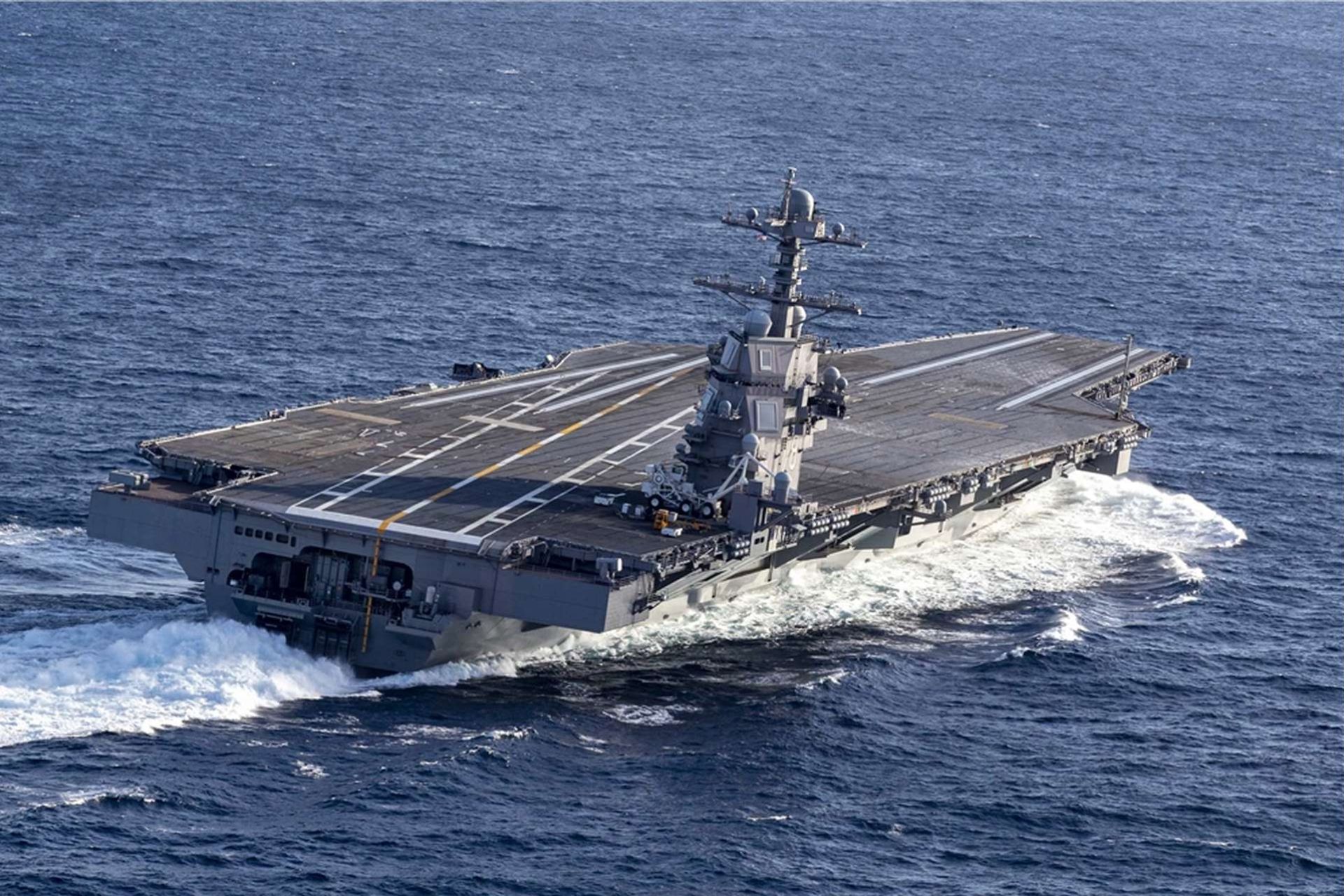Breaking News
US Navy Reveals Next Gerald R. Ford-Class Aircraft Carriers.
According to information published by the US DoD on January 13, 2025, the U.S. Navy has announced that two upcoming Gerald R. Ford-class aircraft carriers will be named the USS William J. Clinton (CVN 82) and USS George W. Bush (CVN 83). The USS William J. Clinton (CVN 82) and USS George W. Bush (CVN 83) will embody the latest advancements in carrier design.
Follow Army Recognition on Google News at this link

Navy's Gerald R. Ford-class aircraft carrier USS Gerald R. Ford. (Picture source: US DoD)
Gerald R. Ford-class carriers are a significant departure from the Nimitz-class vessels, incorporating cutting-edge technologies to enhance operational efficiency, combat readiness, and crew safety. These carriers will utilize an electromagnetic aircraft launch system (EMALS) to replace traditional steam-powered catapults, a change that dramatically increases efficiency while reducing maintenance. The enhanced launch system also supports a wider range of aircraft, including the integration of unmanned aerial vehicles, a vital component of future naval warfare.
Another innovation is the advanced arresting gear, designed for improved reliability and the safe recovery of a broader range of aircraft. This system represents a leap in versatility, reducing stress on airframes and increasing operational flexibility. Alongside this, the class features a fully electric integrated power system, which replaces older mechanical designs to enable seamless power distribution. This capability not only supports current systems like radar and launch mechanisms but also positions the carriers for integration with future technologies such as directed-energy weapons.
The vessels’ dual-band radar provides superior situational awareness, combining air and missile defense functions in a streamlined package. This radar system enhances threat detection and tracking capabilities, addressing the challenges posed by stealth aircraft and advanced cruise missiles. These technologies are complemented by increased automation across the ship, allowing for a significant reduction in crew size while enhancing safety and efficiency.
The Gerald R. Ford-class carriers, including these two newly named ships, are designed for high sortie rates, enabling sustained air operations that are crucial in contested environments. With the ability to launch and recover aircraft at an accelerated pace, these ships will play a central role in maintaining air superiority and supporting joint-force operations. Their nuclear propulsion systems provide virtually unlimited range, ensuring a persistent presence in strategic regions worldwide.
As key platforms for projecting power, the USS William J. Clinton and USS George W. Bush will integrate advanced fighters like the F-35C and emerging unmanned systems into their air wings. This capability ensures their relevance in multi-domain operations, from deterring adversaries in contested waters to supporting ground forces with precision strikes and reconnaissance.


























